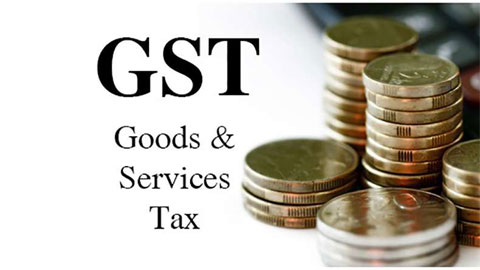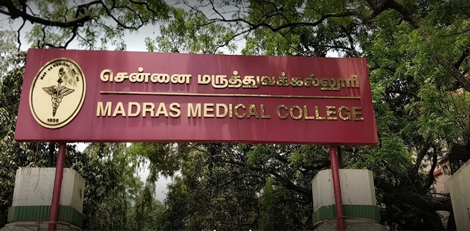Impact of GST on Traders/Dealers
Posted on: 22/Aug/2016 5:12:43 PM

With the onset of Goods and Service Tax Regime, it is pertinent for all the companies to revisit their supply chain mechanism to make their operations more effective and efficient. It is high time for the Chartered Accountants to have a look at their clients� delivery channels to make them in consonance with the proposed regime, as such reorientation normally takes a substantial period to become operational.
This article aims to pass on a brief profile of the GST regime and its impact on distributors / dealers.
1.
Duties and Taxes which are replaced:
In case of imports, Basic Customs Duty on imports be levied in addition to IGST
| Central Excise Duty,Additional EDs,Service Tax, CVD and Special Additional Duty on imports, Surcharge and Cesses | Central GST (CGST) | 1.CGST + SGST are pegged at 18% to 20%. 2.No distinction between services and goods 3.CGST paid on inputs / input services can be set off CGST payable on output / output services. |
| VAT, Entry Tax (not in lieu of Octroi),Entertainment Tax, Luxury Tax, Taxes on lottery / gambling, states cesses / surcharge | State GST (SGST) | 4,Similar, SGST on inputs / input services can be set off against SGST on outputs / output services. 5,Cross utilization between goods and services is allowed. Cross utilization between SGST and CGST is not possible. |
| CST | Inter�State GST | 1.IGST is also expected around 18% to 20%. 2.It can be claimed as credit when the goods are sold in another state. 3.Earlier, CST used to be cost. Post GST regime, it becomes eligible for credit. |
In case of imports, Basic Customs Duty on imports be levied in addition to IGST
2.Impact
of GST on the purchases:
| State of Supplier | Existing Rate | Creditable | Proposed GST Rate | Creditable |
| Outside Tamil Nadu | CST 2% | No | IGST 18% to 20% | Yes |
| Inside Tamil Nadu | VAT 5% / 14.5% | Yes | SGST + CGST 18% to 20% | Yes |
| Outside India | Imports | CVD+SAD Yes | BCD (presentnt rate) + IGST 18% to 20% | BCD � No,Others � Yes |
Inferences:
(a) Based on the above table, it could be referred that in all purchases, the Company had to pay tax of around 18% to 22%. For Imports, there will be an additional levy of Basic Customs Duty.
(b) However, there will be cost reduction to the extent of 2% CST due to IGST eligible for CENVAT credit.
(c) All services and inputs are eligible for credit (except certain items to be listed by the government)
(d) Hence, the company may have to shell out an additional 16% to 18% on its inter�state purchases, but it shall not affect the cash flows of the company because it is also going to collect the additional % from its suppliers. There could be a minor impact on cash flow during the initial months of implementation of the GST (depending upon the Company�s debtors credit period) till the existing stocks are cleared.
3. Impact of GST on the Sales:
|
Supplier Name |
Proposed GST
Rate |
Creditable for
buyers |
|
|
|
|
|
Sales within the
State |
SGST + CGST 18% to 20% |
Yes |
|
|
|
|
|
Sales outside
the State |
IGST 18% to 20% |
Yes |
|
|
|
|
|
Exports |
Zero rated |
N.A. |
|
|
|
|
Inferences:
(a) From buyer�s perspective, they can claim credit of all GSTs (whether it is SGST / CGST / IGST).
(b) Reversal of credit in relation to Stock transfers may be phased out in the new regime. But, given that the direct sale to the customers is better, there may not be much need for stock transfers, except for operational convenience.
4. Location of Warehouses and GST regime:
(a) There is no need to have State-wise warehouses to avoid CST and to facilitate buyers to claim credit.
(b) Warehouses can be decided based on operational efficiency instead of tax savings.
(c) Warehouses can be minimized based on the operational convenience of the company. This serves two purposes � (a) Reduction of establishment costs (b) Reduction of documentation and registration.
5. Registration: In case of warehouses/marketing units in multiple states, each of them has to be registered under the respective state and returns have to be filed separately for each statete (both CGST & IGST).
6. Documentation requirements:
(a) C Form and other forms may be phased out, reduction of multiple returns filed and documentation
(b) Single Invoice for both CGST and SGST together.
(c) Separate returns to be filed in common format for CGST and SGST for every place of registration.
The above information are based on the Model GST Law and existing practices in other countries. In case of further information / clarity, please send the queries to the below mentioned ID
Indirect Tax Team
G Sekar Associates
Chartered Accountants
Mail ID: gst@gsacas.com








